#Cist Burial
Text
Skeletons under the Floorboards: A Multiple Iron Age Burial in Applecross
by Cathy Dagg
The Background
In July of 2015 workmen renovating an old house in Applecross reported finding a human skull under the kitchen floor. They had, apparently, found other bones and thinking them to be animal, chucked them out. The skull initially looked like a cobble, similar to the cobbles that made the former storm beach that the house had been built on, but when it proved to be…
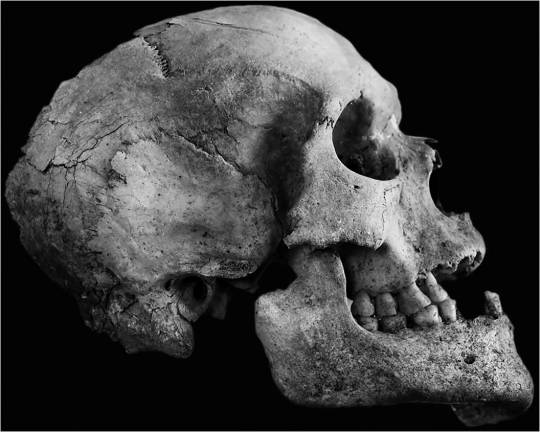
View On WordPress
#Applecross Archaeological Society#Applecross archaeology#Black Rocks Gullane#burial cairn#Cist Burial#East Lothian#excavating human remains#highland archaeology#Ian Armit#iron age human remains#Loch Borralie#Lochend#Lochend East Lothian#Michelle Williams Ward#North Belton Dunbar#palaeopathology#radiocarbon dates#Sangobeg
0 notes
Text
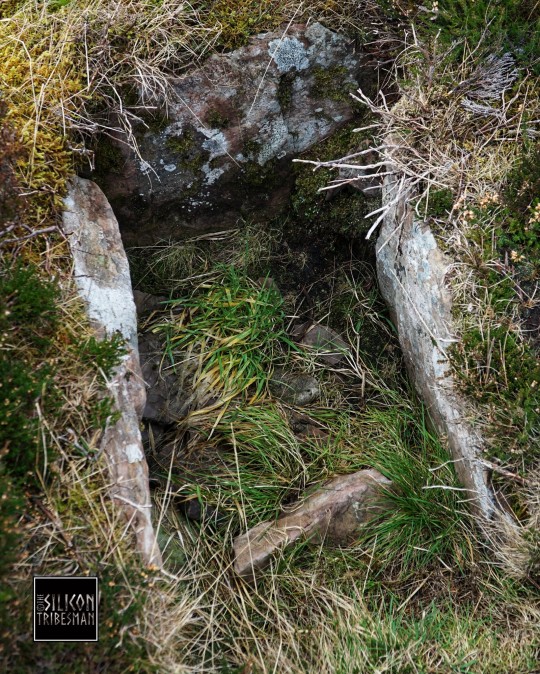
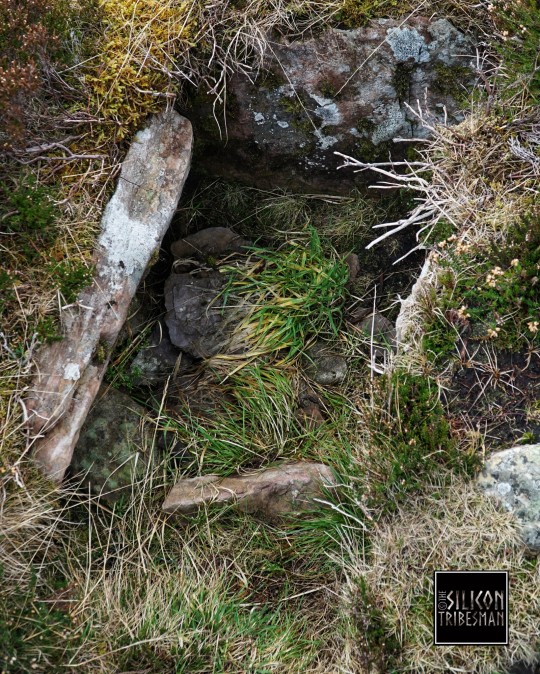

'Cairn O' Get' Prehistoric Cist Cairn, Caithness, Scotland
#ice age#stone age#bronze age#iron age#copper age#prehistoric#prehistory#neolithic#mesolithic#paleolithic#calcholithic#archaeology#relic#cist#cist cairn#cairn#burial chamber#burial mound#burial ground#ancient cultures#ancient living#ancient craft#caithness#Scotland#wild places
70 notes
·
View notes
Photo
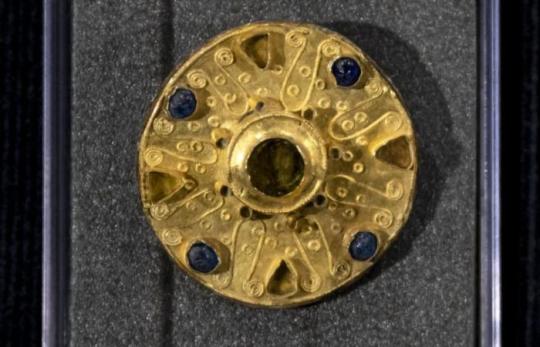
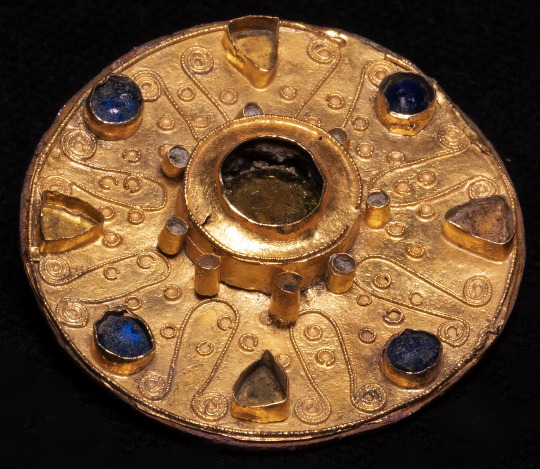
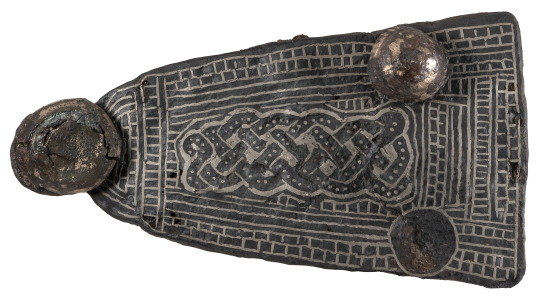
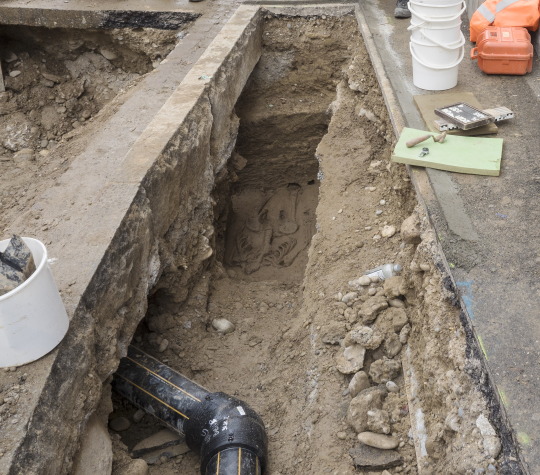
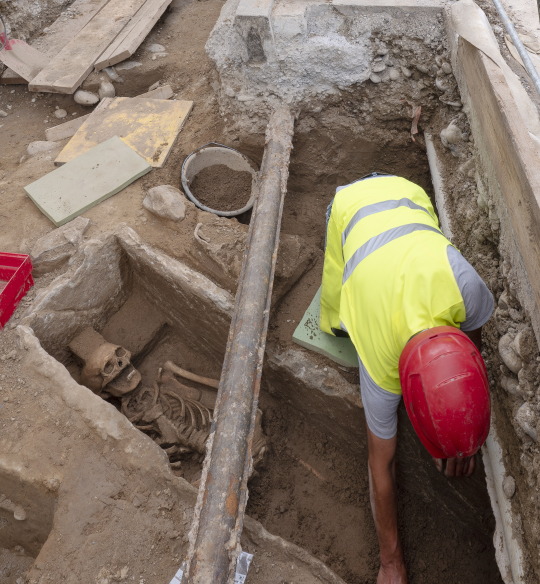

Medieval Tombs with Gold Jewelry Found in Switzerland
An excavation of the Kleinbasel neighborhood of Basel, Switzerland, has brought to light 15 graves, some of them richly furnished, from an early medieval burial ground. The presence of a burial ground from this period had been known since the 19th century, so a rescue archaeology excavation was undertaken in the area before installation of new utility pipes. Earlier this year the excavation unearthed the 6th century grave a young girl buried with a dazzling array of about 380 beads. The recent discoveries prove that the cemetery was more densely populated than archaeologists realized.
One of the highlights of the newly-discovered graves is that of an elite young woman who was about 20 years old when she died in the 7th century. The grave was damaged during construction in the early 20th century. The skull is lost, as is the body below the knees, but the riches she was buried with remain. The grave contained a rare gold disc brooch made of a base plate made of a non-ferrous metal that was then topped with gold. The disc was then adorned with gold wire filigree and inlayed with green garnet gemstones and blue glass. The brooch likely held together a cloak, now gone, at her neck. She was also wearing a necklace made of 160 glass, amethyst and amber beads (or had them sewn onto the collar or bodice of her garment). There was also a leather strap decorated with metal crosses that terminates in a large amber pendant. Around her waist was a belt with an iron buckle and a silver tongue. Hanging from the belt was a chatelaine with pierced Roman coins, metal artifacts and a bone comb.
Other notable graves found in the current excavation include a child’s grave containing a large silver inlay belt buckle, metal belt fittings, scissors and a comb, and a stone cist grave containing the skeleton of an adult man. The man’s face bears the unmistakable evidence of violent blow from a sword. Amazingly, the man survived the disfiguring injury as he died after it was fully healed.
Basel was founded as a Celtic oppidium, or fortified settlement, in the 1st century B.C. The Romans built a military camp on the site of the settlement and by the end of the 1st century A.D., it was absorbed into the Roman province of Germania Superior. Roman control weakened in the 3rd century, but the troops along the Rhine managed to repel invasions from the Germanic Alemanni confederation several times in the 4th century. The Alemanni finally won around 406 A.D., settling throughout the Swiss Plateau. They and the Franks after them occupied the old Roman castle and the town’s fortunes were revived. It was minting its own coins in the 7th century and was made a bishopric in the 8th. The Roman castle was converted into Basel’s first cathedral. What is today the Kleinbasel area was the castle/cathedral hill, the nucleus of the early medieval settlement.
#Medieval Tombs with Gold Jewelry Found in Switzerland#basel switzerland#ancient tombs#ancient graves#ancient artifacts#gold#jewelry#history#history news#ancient history#ancient culture#ancient civilizations
174 notes
·
View notes
Text
Archeology tutor: This is a cist grave it was a ancient burial technique
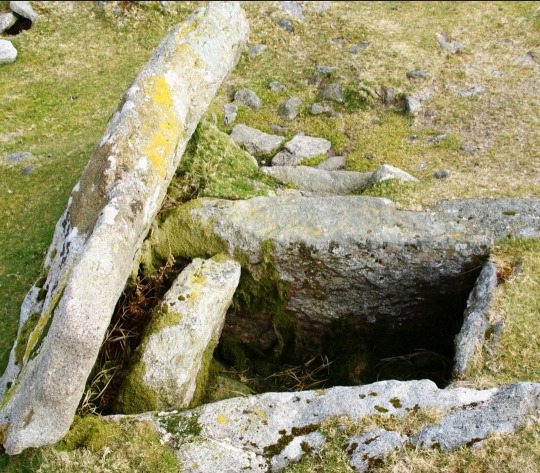
(Me in my head hearing cis): Ah yes this is were the straights were buried
1 note
·
View note
Photo

The Battle Axe Culture on Bornholm
Bornholm was influenced by the cultural development that took place in southern Sweden; a development that in many ways can be compared to the changes occurring in Jutland and the east of Denmark around 2800 BC. The Single Grave Culture’s neighbour to the east was called the Battle Axe Culture or the Boat Axe Culture, named after its boat-shaped battle axes made of stone. Substantial areas of land were also cultivated on Bornholm. Stone cists were used for burials.
The Danish National Museum
2 notes
·
View notes
Photo




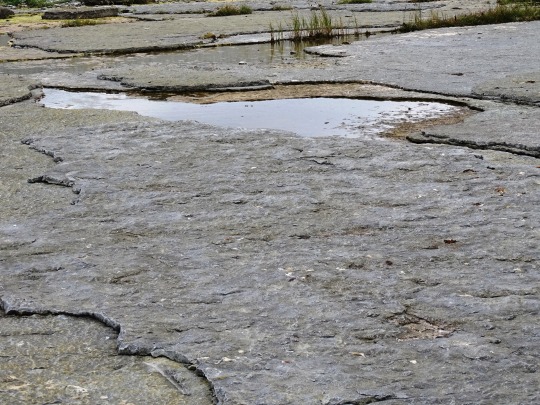
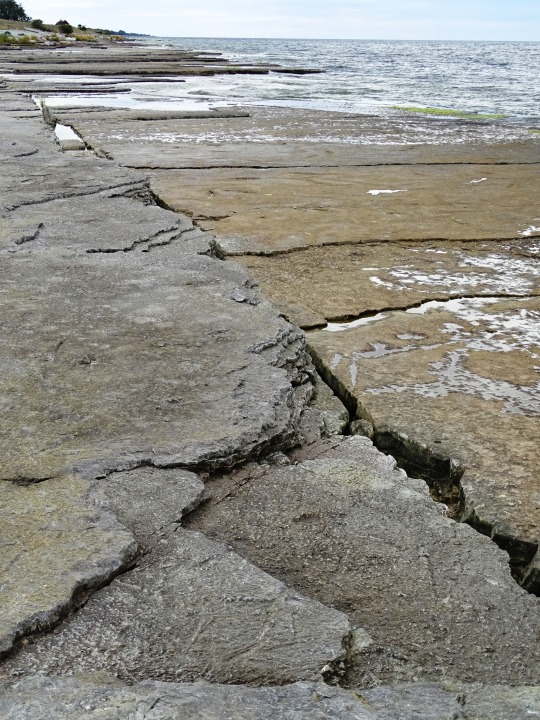
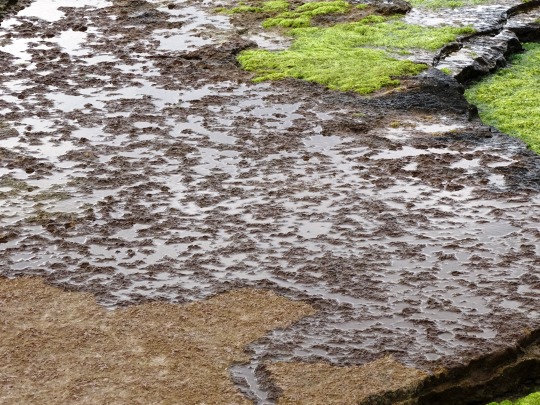

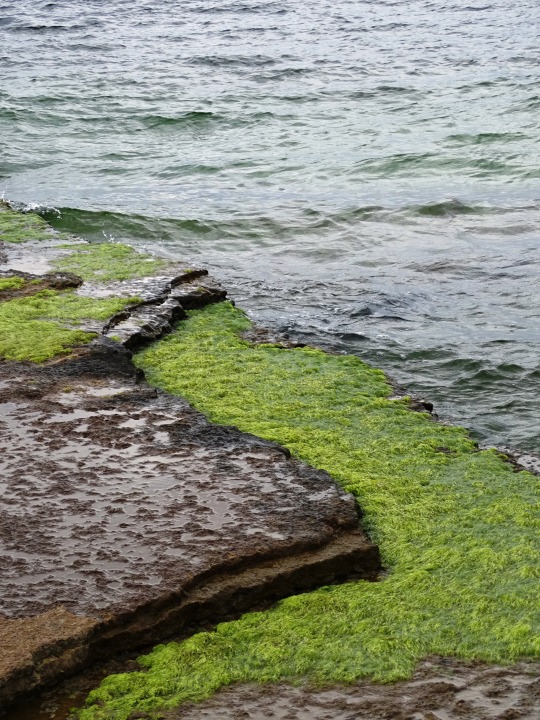
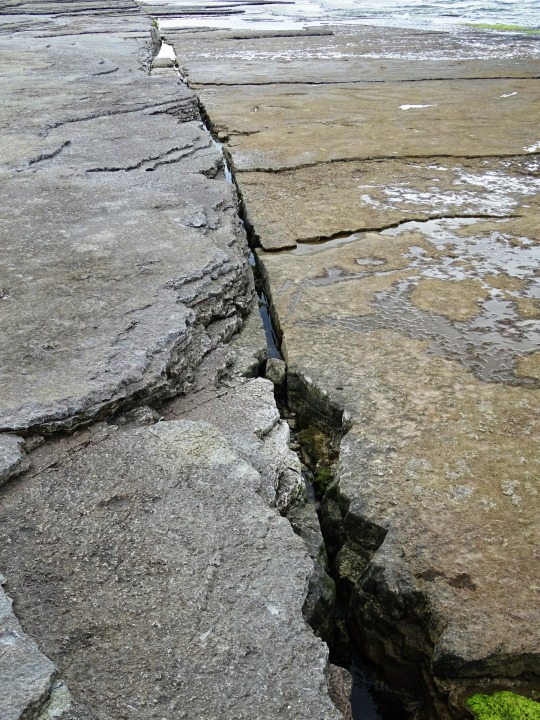
Neptune's Fields, Sweden (No. 7)
This ancient burial ground is filled with various cists and cairns, Viking-era graves, stone circles, and a Bronze Age ship-shaped burial mound called the Forgalla Skepp (Forgalla Ship). The beach is also rich with fossils, including numerous trilobite and brachiopod fossils.
Know Before You Go
Neptuni Åkrar is on the coast and therefore likely to be windy. It is also a nature reserve so visitors should respect the area and not litter or take home rocks as souvenirs. It's best to visit in June if you want to see the blueweed blossoms. The pin points to the viking graves at the southern end of Neptuni Åkrar.
Source
#Neptune's Fields#Neptuni åkrar#fossil#cobble beach#shore#coast#travel#Kalmar County#Kalmar Strait#Kalmarsund#Borgholm Municipality#Öland#island#Sweden#Sverige#Scandinavia#Northern Europe#summer 2020#landscape#seascape#countryside#tourist attraction#landmark#nature reserve#original photography#flora#rock formation#free admission
2 notes
·
View notes
Text
youtube
Following discussion with Jamie and Janet about collab and inspired by Fictional Landscapes .From Canmore I found 2 local prehistoric cist sites near me , 1 in West Kilbride and 1 in Largs. Went to each site and took series of moving images. Stayed in each place thinking about then and now , no trace apart from a insert on Canmore and links to archaeological index from the 1800's and the 1970's. The site in Largs appeared from the records a significant number of human remains and death / burial architecture. I contrasted my experience from being in ORkney and the way that the island has held these ancient sites close and and protected. Mirroring in the contemporary landscape some of the ways that these prehistoric funerary sites were placed in ORkney as an ongoing engagement with the dead. Possibility that the dualisims held today : nature / culture , human /non human . living / dead didn't exist as a conceptual or ideological way of thinking.
I then put together some of the moving images and then responded in writing / poetry. Adding the spoken word to the collated images.
I will leave for a couple of days then come back to write to what emerges as embodied knowledge , strands to research more.
0 notes
Text
Tourist places around Kakkadampoyil
A magical place nestled in the clouds, Kakkadampoyil stands nearly 2,130 feet tall. Heaven on earth. This is yet another serene location that has come under the 'must explore' list of late for the travel hungry.
It is located about 19 km from Thiruvambady and 24 km from Nilambur. “Kakkadampoyil is part of the Nilambur DFO, so trekkers can trek the grasslands, Chemboth Mala, or Pottan Para hills.”
Kozhippara Waterfalls
This scenic spot is located in the high ranges of Malappuram. The place is covered in mist all day long near Kozhippara. Chokkad stream flows through the waterfall. Swimming and trekking are ideal at Kozhippara waterfalls in Kerala. Adventure enthusiasts can explore this spectacular waterfall, which is one of the best waterfalls in the world. Mostly engulfed in mist, Kakadam Poyil is a beautiful spot nearby.
PVR Amusement Park
The water park in Calicut that has large water slides, a crystal clear purified water plant, a rain water dance floor, a swimming pool, and a kids area. The PVR Tourism Village in Calicut is the best place to go for a day picnic with children as it has separate parking areas for men and women, changing rooms, locker rooms, and a canteen. Ticket prices at PVR Tourism Village are extremely affordable.
Valamthode Waterfalls
Valamthode Waterfalls are a sight of beauty and freshness amidst tribal settlements. About 27 km from Nilambur, on the Areekode-Mukkam Road, one can access the falls.
Pazhassi Tomb
The Pazhassi Tomb is a significant monument built in honour of Veera Pazhassi Raja, also known as the Lion of Kerala and an Indian freedom warrior who rose up against the British to demand India's independence. Pazhassi Raja was the last ruler to oppose the British after Tipu Sultan. In Wayanad, a tiny monument was created after his passing. Visitors may view the priceless items that the freedom warrior Pazhassi owned inside his grave.
The State Archaeology Department is in charge of maintaining the complex that houses the memorial, which includes mural paintings, antique bronzes, ancient coins, temple model replicas, umbrella stones, dolmenoid cists (quadrangular burial chambers with capstones), and other megalithic structures. The well-known artist Raja Ravi Varma's work is on exhibit in the memorial's art gallery.
Teak Museum
Teak has a unique place in the world of wood. Kerala has long been heavily involved in its trading and cultivation. The Malayalam word "theku" is where the term teak originates. The world's oldest plantations are located in Nilambur, which is also known for its best teak. From the 19th century, the teak and Nilabbur teak plantations were renowned for their high-quality wood, which was utilised for creating cabinets and ships.

0 notes
Text
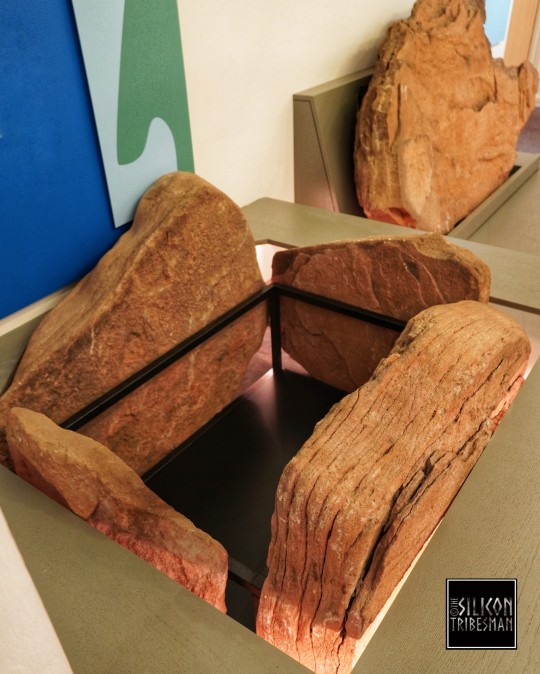
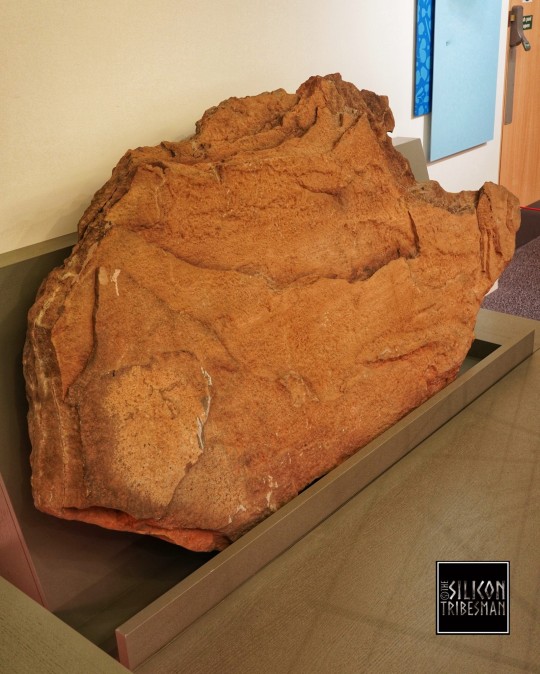
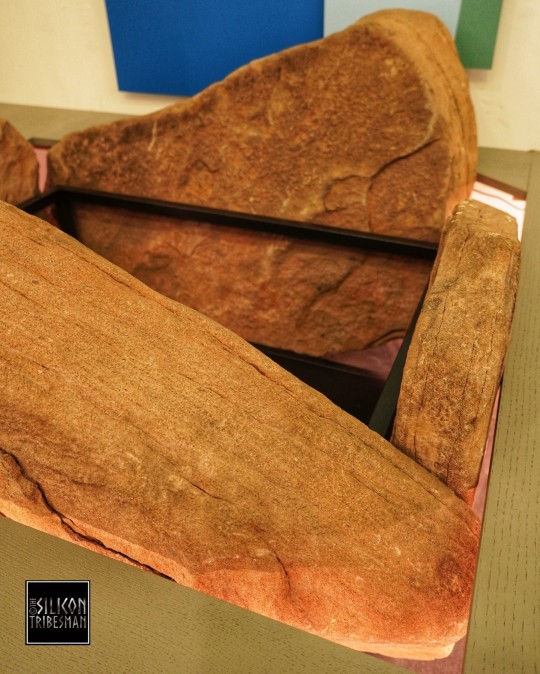


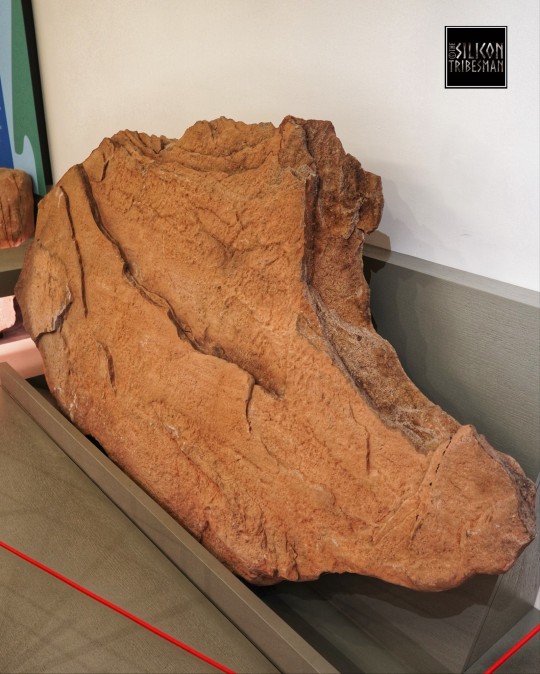
Bronze Age Cist, Banchory Museum, Scotland
Archaeological evidence shows activity of people on the banks of the River Dee since Lower Upper Palaeolithic times. This is more than 14,500 years ago, when Britain was still connected to the rest of Europe and the ice was starting to retreat.
This suggests Banchory is one of the oldest known settlements in Scotland. The name Banchory derives from an early Christian settlement founded by St Ternan.
Around 3900 BCE, two of the largest and earliest known Neolithic timber halls in Europe were built on both sides of the River Dee at Crathes and Balbridie. The area features large numbers of ancient monuments.
#ice age#stone age#bronze age#iron age#copper age#archaeology#prehistoric#prehistory#neolithic#mesolithic#paleolithic#calcholithic#cist cairn#cairn#Banchory#Scotland#ancient living#ancient craft#ancient cultures#relic#stonework#burial chamber#burial mound
89 notes
·
View notes
Photo
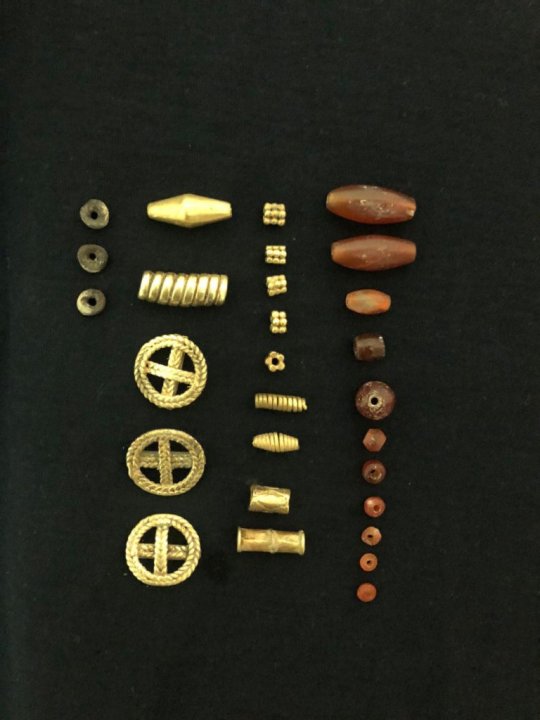


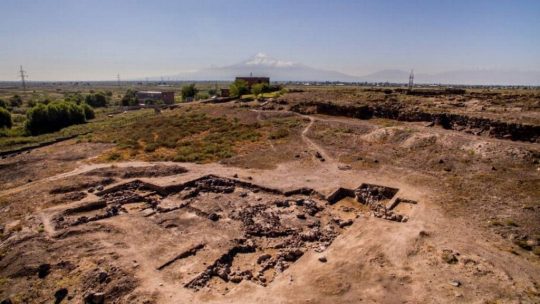
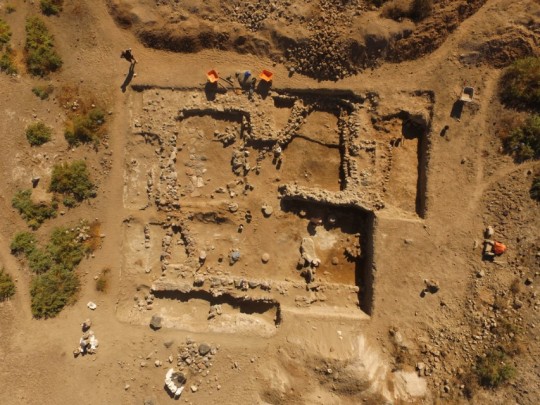




Archaeologists in Armenia Discover an Ancient ‘Golden Tomb’
It's the latest find from a joint Polish and Armenian excavation effort begun in 2013.
Archaeologists at Metsamor, an ancient necropolis in Armenia, have discovered a tomb filled with gold pendants and more than a hundred amber and carnelian beads. Dating to the late Bronze Age (1,300 to 1,200 B.C.E.), the grave also held the remains of a man and a woman, who appear to have be buried at the same time.
“Their death is a mystery to us, we do not know the cause, but everything indicates that they died at the same time, because there are no traces of tomb reopening,” Krzysztof Jakubiak, an archaeology professor at the University of Warsaw, said in a statement.
Laid to rest in an eternal embrace, the couple was buried in a cist, a stone-lined chamber dug into the ground. Believed to have died in their 30s, one wore bronze bracelets, the other a tin wire ring.
The grave also included a wooden burial bed, a faience flask, and about a dozen ceramic vessels. According to researchers, the beads and pendants were originally part of three necklaces, and the flask would have been imported from the Syrian-Mesopotamian borderland.
The research project at the Ararack Valley is a joint effort the Polish Center of Mediterranean Archaeology at the University of Warsaw and Armenia’s Service for the Protection of Historical Environment and Cultural Museum-Reserves, led by Jakubiak and Ashot Piliposian. The partnership has been ongoing since 2013, according to the Greek publication Archaeology; an exhibition of their findings opened last fall at the Armenian History Museum in nearby Yerevan.
To date, archaeologists have discovered about 100 graves in the cemetery, but the newly found golden tomb is one of the few that were not looted prior to the start of excavations in 1965. The cist graves would have been covered with burial mounds of earth that have eroded over the centuries.
Because the ancient Armenians do not appear to have been illiterate, and left behind no written records, archaeologists know little about Metsamor society. The walled settlement was at its height from 4th to the 2nd millennium B.C.E., with temple complexes surrounding a central fortress.
“It was a very large settlement. Even fortifications made of huge stone blocks have survived to our times, encircling the so-called citadel on the hill,” Jakubiak said. “There was no other settlement in the region that could be compared in terms of importance and size.”
By Sarah Cascone.
#Archaeologists in Armenia Discover an Ancient ‘Golden Tomb’#Metsamor#ancient tomn#ancient grave#ancient necropolis#ancient artifacts#archeology#archeolgst#gold#gold jewelry#history#history news#ancient history#ancient culture#ancient civilizations#bronze age
51 notes
·
View notes
Photo

‘On Whitehorse Hill’ Poem
Written by The Silicon Tribesman. All Rights Reserved, 2019.
#whitehorsehill#bronzeage#cist burial#cist cairn#prehistory#prehistoric#dartmoor#grief#poemsaboutlove#poets of tumblr#poetry#poetic#poetry of loss#poetry of death#poems about death#megalithic#cairn#creative#education#cross arts#cross curricular#community#identity#belonging#ritual
44 notes
·
View notes
Photo
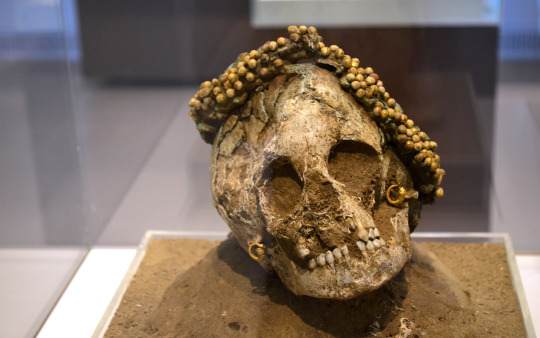

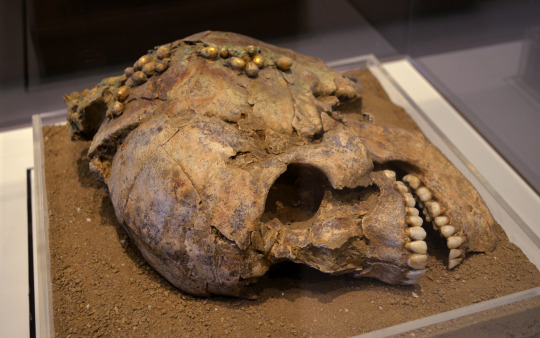
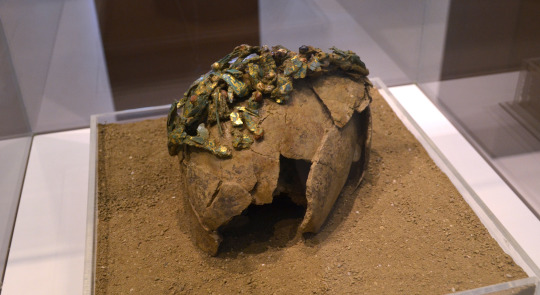
Archaeological Museum of Patra:
Four crowned skulls of two little girls, and two women, from the North Cemetery in Patras, from the Hellenistic Period.
The first skull bears a wreath of gilded myrtle fruits. The deceased wore golden earrings. (300-275 B.C)
The second skull bears a wreath of fruits and myrtle flowers. The flowers are earthen, some gilded and others in a variety of colors. (late 4th-3rd cent. B.C)
The third skull bears a gilded myrtle wreath, where apart from the leaves, some of the small fruits have survived as well.
The fourth skull is also decorated with a gilded myrtle wreath. The shaft is made of lead and has been also perforated. Gilded bronze leaves and earthen fruits were attached to the small holes.
A detail from the heads of the two little girls. Damages to the skulls might have occured posthumously- it was not specified in the tags.


I have seen many luxurious funerary wreaths, made of gold, with extraordinary craftmanship, they are a particular trait of the burials of the Hellenistic period, and these burials were of particularly wealthy, aristocrats of the (Greek) Macedonian elite, usually families of soldiers associated with the campaigns of Alexander the Great. They were discovered either in ornately painted built tombs, under raised mounds, or well built cist graves, who often would also be decorated with painting.
But these burials of commoners, those wreaths of painted, clay flowers are the most touching of them all. It just shows you the exceptional love and care that existed in those ancient families.
#ancient greece#tagamemnon#archaeology#tw: human remains#human remains#skull#funerary wreaths#wreaths#greece#greek museums#museums#archaeological museum of patra#patra#funerary customs#ancient burials#burial customs#child burials#tw: death#tw: child death#ancient art#αρχαία ελλάδα#ελλάδα#πάτρα#ταφικά έθιμα#στεφάνια ταφής#ελληνιστική περίοδος
6K notes
·
View notes
Text
'Untouched' Bronze Age tomb containing human remains and a mysterious stone found in Ireland
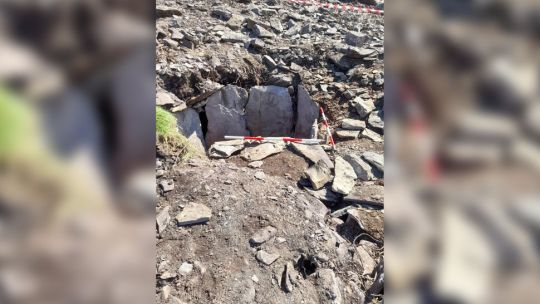
An ancient tomb thought to date back more than 3,000 years has been discovered in southwest Ireland by workmen carrying out land improvements on a farm.
Archaeologists say the tomb on the Dingle Peninsula of County Kerry is "untouched" and that some of its unusual features, including a mysterious oval-shaped stone inside, indicate that it could be an early example of an ancient burial.
The tomb appears to be a "cist" or chamber tomb, consisting of an underground stone-lined structure built to contain one or several burials and capped with a large stone, Ronan Casey, a spokesperson for Ireland's National Monuments Service, told Live Science. Read more.
348 notes
·
View notes
Photo

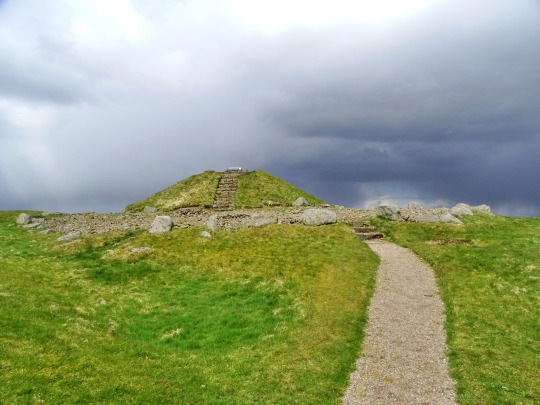
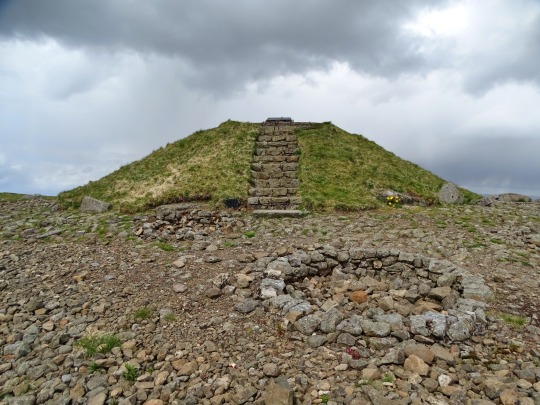
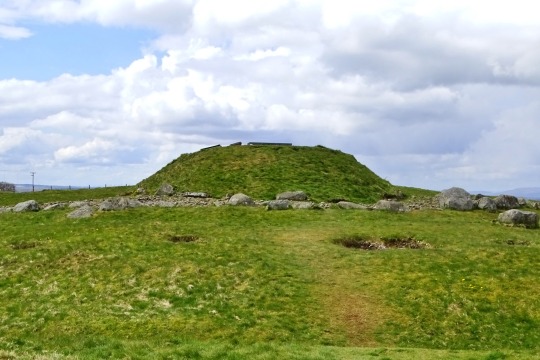
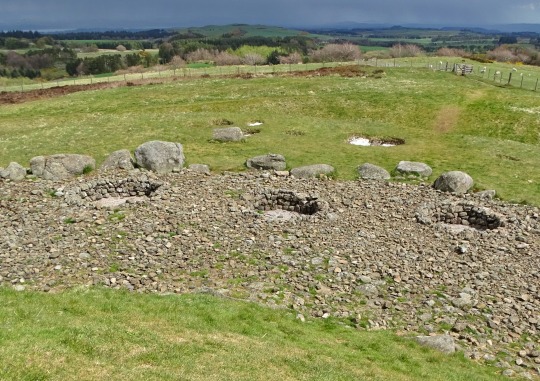



Cairnpapple Hill.
Cairnpapple has been on my radar for some time, since I made a visit to nearby Torphichen Preceptory just over three years ago, thanks to Frank Stewart for taking me here last week.
This area covers many different eras, starting with the henge that dates from about 3800 BC. Centuries later the landscape was chosen for a number of Bronze Age burials. Much later still, it was used for early Christian graves, if you bring it right up to todays tourist attraction that's around 6 thousand years, that's older than the likes of Stonehenge and the Pyramids.
Cairnpapple Hill is one of the best-known prehistoric sites in mainland Scotland. Its prominence in the landscape and the fine views from its summit are at least partly why this particular location developed into such a special place.
Professor Piggott of the University of Edinburgh excavated the site in 1947–8, uncovering the henge monument and later burials across the summit of the hill. Cairnpapple had been the focus of communal activity for more than 200 generations of local farmers, and the landscape is still peppered with farms, and indeed a new "henge" as seen in my pics from yesterday, built by another local farmer.
Finds on the site include two stone-axe fragments from axe "factories" in Wales and Cumbria. Clearly the early Neolithic farmers of West Lothian didn’t lead isolated lives. The hearths are no longer visible, as they were covered by the henge monument – a great oval earthwork enclosure – built in the later Neolithic period, unfortunately it was closed last week, but Frank says he will take me back some day and hopefully get a look inside the mound.
The henge at Cairnpapple had a bank 60m across, surrounded by a broad ditch, which enclosed a ring of 24 upright timber posts. The timber hasn’t survived, but the post holes are clearly visible. There were two entrances to the henge, almost directly opposite each other.
The henge ceased to be used for ceremonial purposes about 4,000 years ago, during the early Bronze Age. But the local people clearly still revered it, as they buried an important member of the community there.
This first burial place was marked by an oval setting of stones, with a single large standing stone at its head. The body had been buried with a wooden mask covering the face. Two Beaker pots left alongside had probably been filled with food and drink to sustain the dead person on the journey to the afterlife.
Two burial cists were added later. These were stone-lined pits with a single massive capstone on top. A food vessel was found in one and a single human cremation in the other. One cist bore three cup-marks pecked into the surface. These burials were covered by a stone cairn, which was neatly edged with 21 kerb stones.
A skeleton and artefacts found at Cairnpapple can be found in the National Museum of Scotland, Edinburgh.
260 notes
·
View notes
Photo
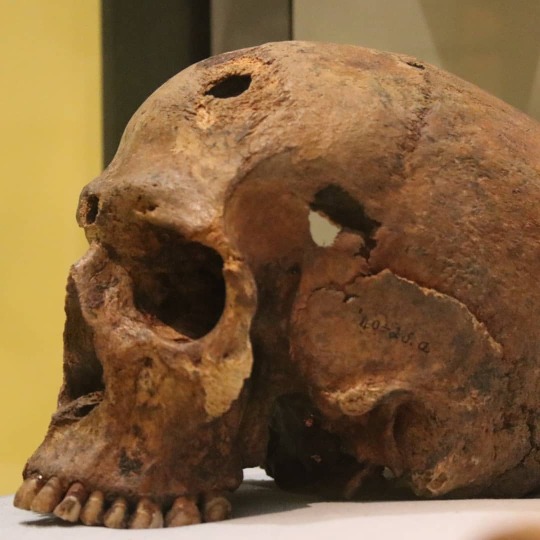
"Whencesoever they came, the men of the British bronze [age] race were richly endowed, physically. They were, as a rule, tall and stalwart; their brains were large; and their features, if somewhat harsh and coarse, must have been manly and even commanding." John Beddoe, The Races of Britain: A Contribution to the Anthropology of Western Europe (1885). These pictures are a selection of Bell Beaker folk Bronze Age artefacts at the Kelingrove museum in Glasgow. 1. A bronze age skull of a Beaker folk male whose cause of death seems pretty obvious. 2. Bronze weapons including an axe so tiny it can't possibly have been used for anything but some kind of ceremony. 3. Gold jewellery. 4. Cup and ring marks carved in stone. 5. Funerary urns. 6. A tiny urn for a child? 7. I am pointing at one of four stone slabs that formed the cist for a high status male burial. The zig zag engraving resembles other early Indo-European art seen on pottery. 8. An actual bell beaker for drinking rituals. 9. A woman's necklace made from jet. #indoeuropean #bellbeaker #bronzeage #scottishbronzeage #scottishhistory #ancientscotland #ancientbritain #bronzeagebritain #beakerpeople #beakerfolk #cist #burialmound #cremation #archaeology #kelvingrove (at Kelvingrove Art Gallery & Museum) https://www.instagram.com/p/CUSlxmTtPiW/?utm_medium=tumblr
#indoeuropean#bellbeaker#bronzeage#scottishbronzeage#scottishhistory#ancientscotland#ancientbritain#bronzeagebritain#beakerpeople#beakerfolk#cist#burialmound#cremation#archaeology#kelvingrove
14 notes
·
View notes
Text
Megalith Cist Burials Found in Southern India

Archaeologists have uncovered a total of 250 cairn circles in southern India’s trade and industrial center of Kodumanal, which was inhabited from the 400s through first century B.C.E.
The cairn circles were made of giant rocks, or megaliths. Most of the cairn circles were around rectangular chambers built of megaliths, which in turn contained burial cists and three or four bowls or pots. The pottery was likely for offerings placed outside the burial cists, showing a belief system that included something after death.
An impressive ten pots and bowls were recently unearthed in a larger circle made of boulders and rectangular-shaped cists made of stone slabs, surrounding a three-chambered burial. This larger, more complex burial might have been intended for someone important in the community.
234 notes
·
View notes